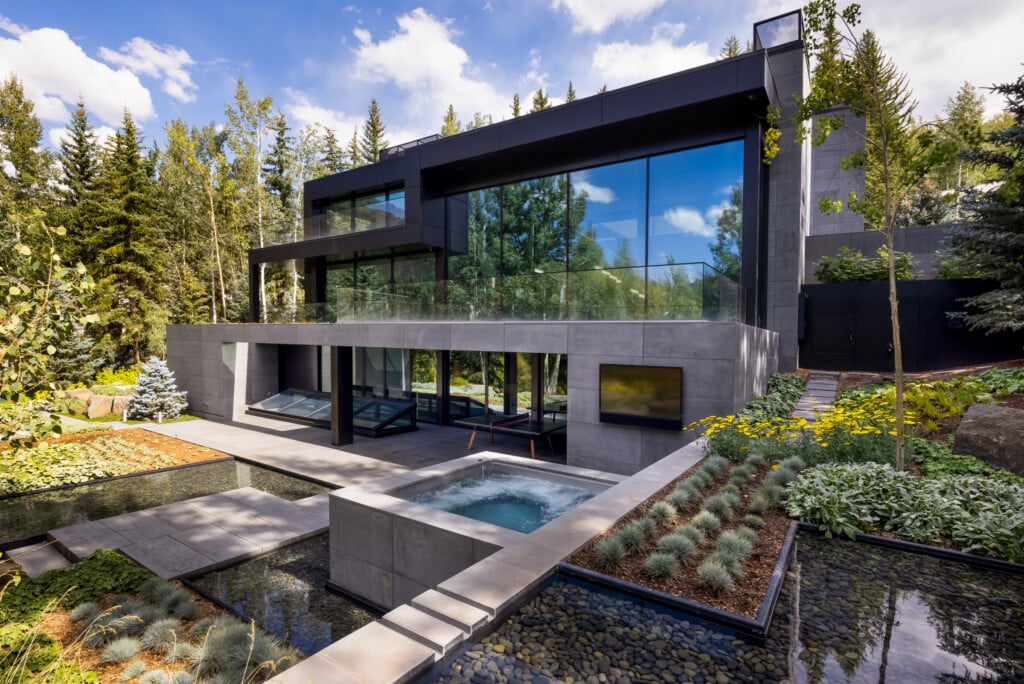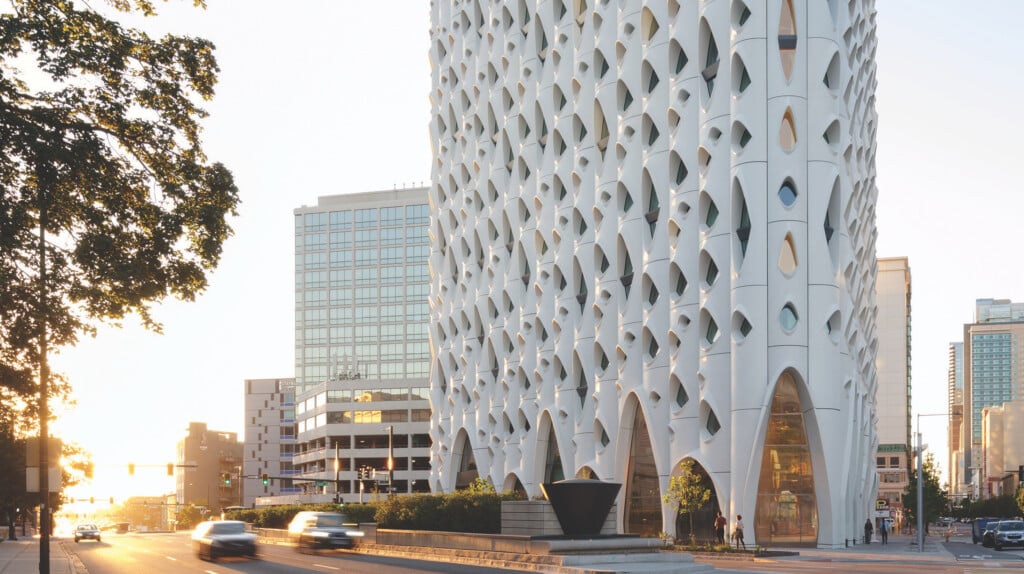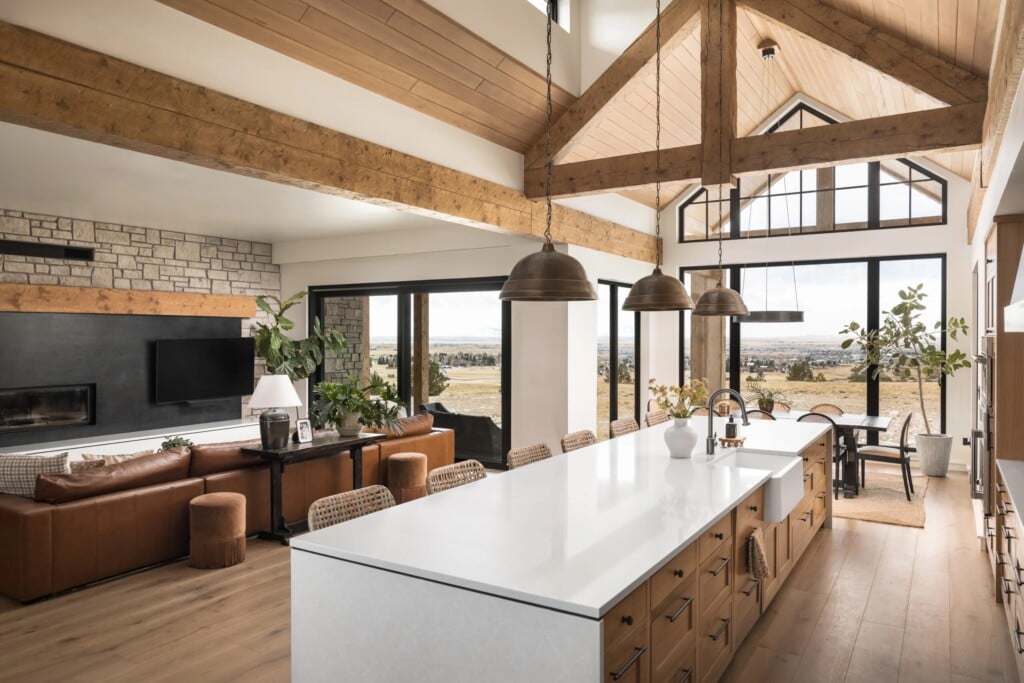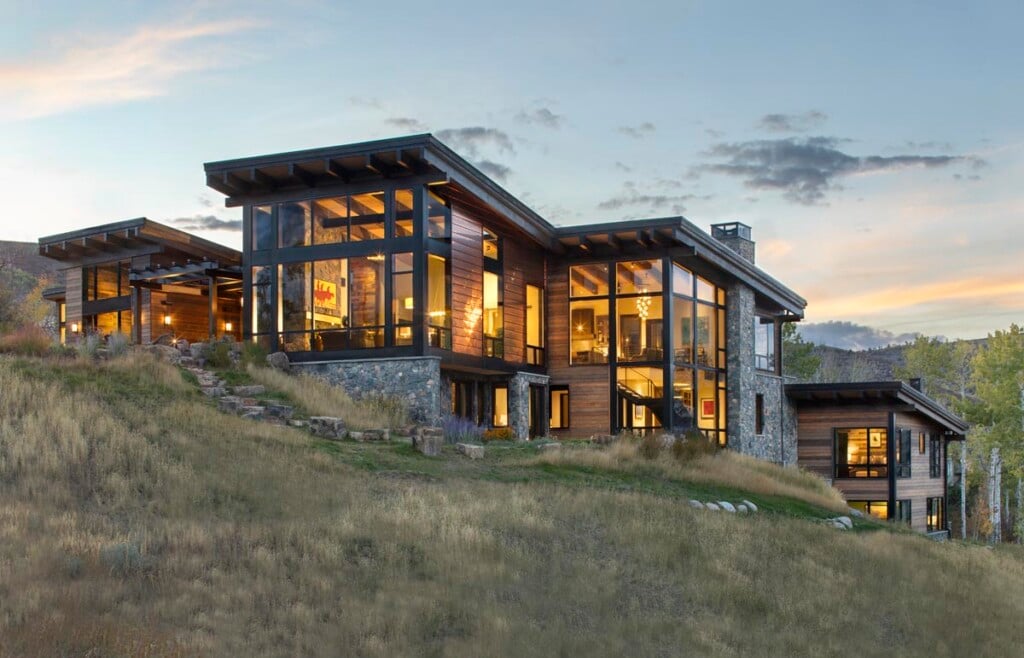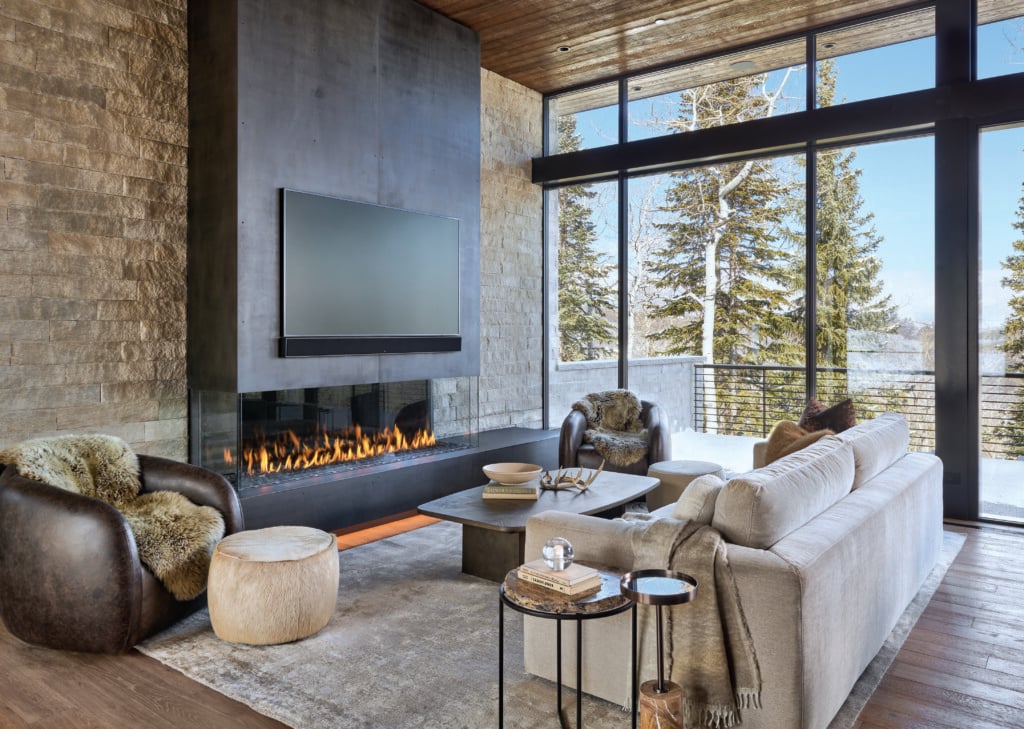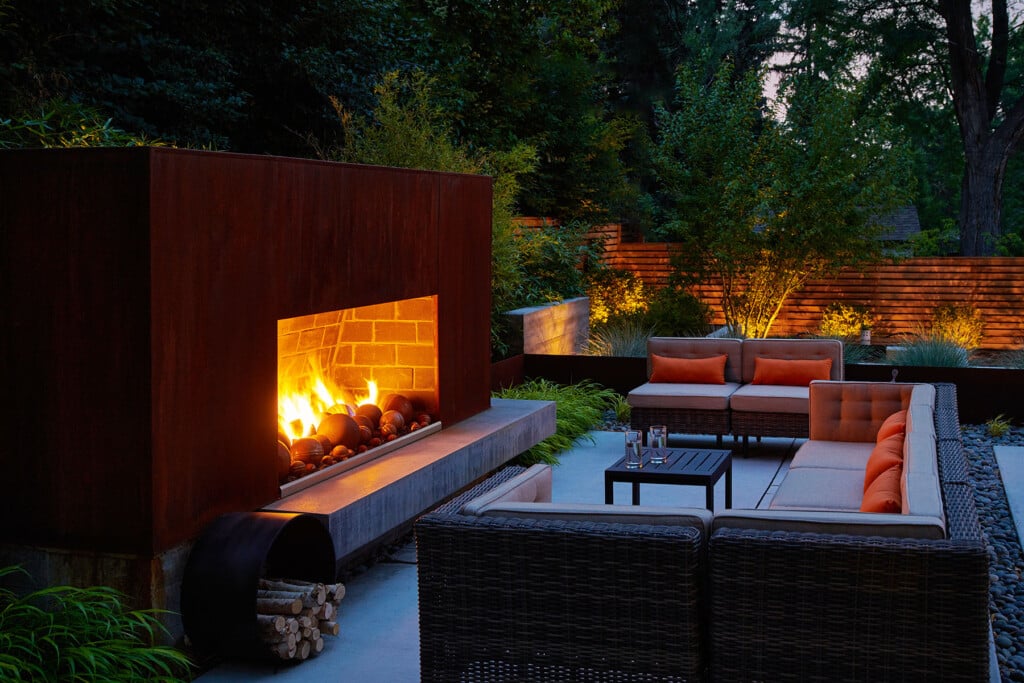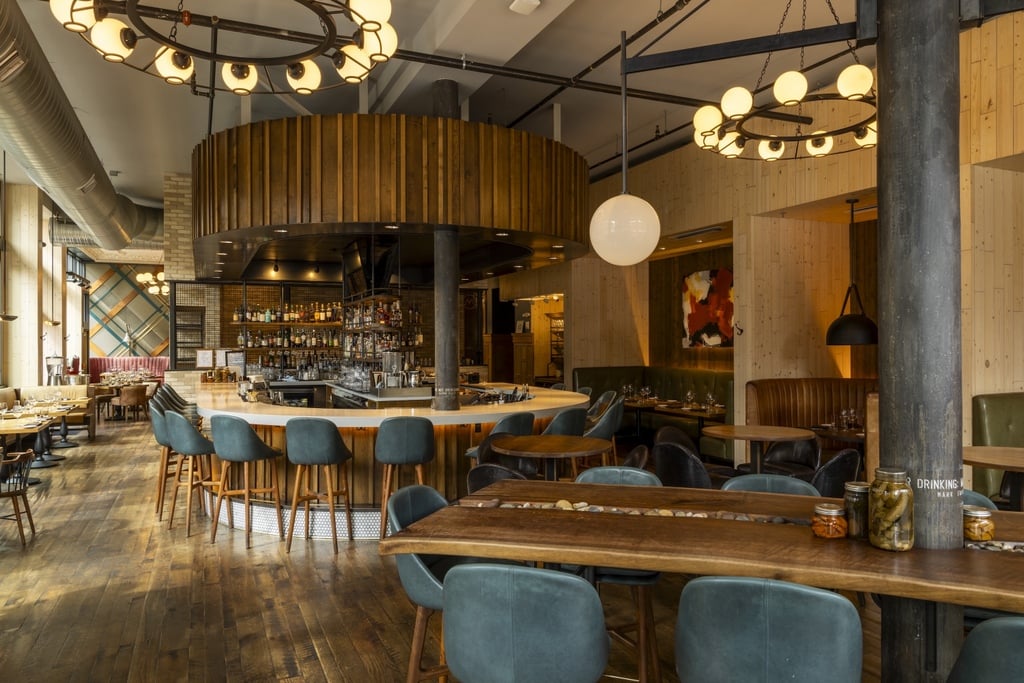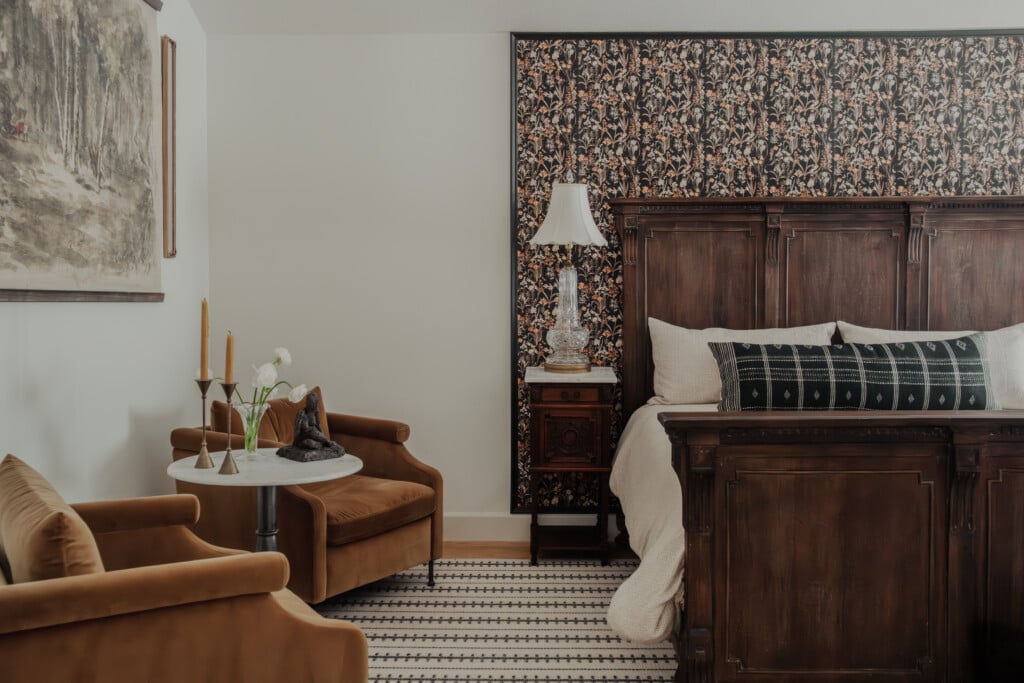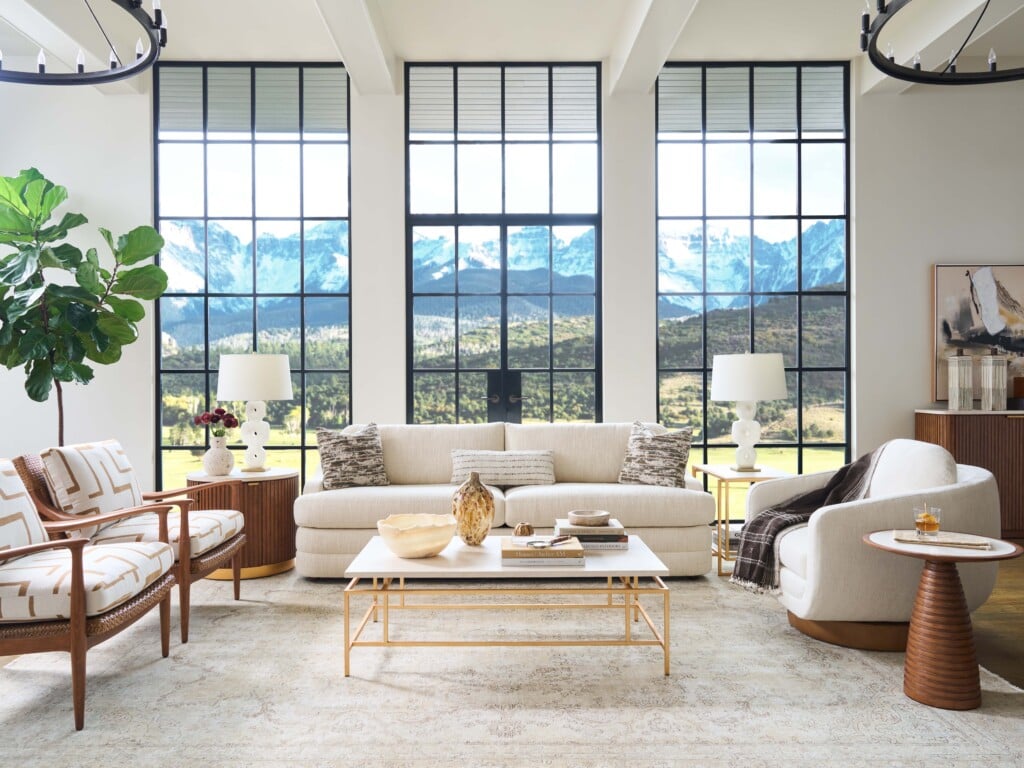The Evolution of Modern Home Design
Celebrating 25 years of KH Webb Architects, award-winning architect Kyle Webb reflects on the ways modern architecture has evolved.
Modern architecture has evolved significantly over the last quarter century, moving beyond aesthetics to focus on technological advancements, sustainability concerns, and changing design philosophies. Industry innovations and cultural shifts have reshaped the way these homes are designed and experienced, and the future is likely to see even more innovation in the years to come. Here, we examine three of the most significant changes.
Modern Materials and Aesthetics
Today’s homes feature a broader selection of materials and sleeker aesthetics. While classic elements of architecture remain timeless, architects now mix in steel, concrete, and glass to create a more modern look. Floor-to-ceiling windows have become a defining feature, maximizing natural light, while making interiors feel more spacious.
The shift in aesthetics has also led to cleaner lines and minimalist design elements. Modern homes revolve around lighter palettes, streamlined features and open-concept layouts that marry indoor and outdoor living spaces. The result is a sophisticated yet welcoming atmosphere that balances natural beauty with contemporary style.
Sustainability and Eco-Friendly Innovations
Sustainability has become a major focus in modern home design. Twenty-five years ago, efficiency wasn’t a top priority—homes were often built without much consideration of their environmental impact. Today, energy-efficient construction and eco-conscious materials are the norm. Builders use reclaimed wood, recycled metal, and non-toxic finishes to reduce their footprint while maintaining durability and aesthetic appeal.
The Rise of Luxury and High-End Amenities
As a result of the pandemic, many homeowners have transformed their homes into personal sanctuaries. Luxury touches such as spa-like bathrooms, chef’s kitchens, and lavish entertainment spaces are de rigueur. Homeowners are further personalizing their spaces with features such as extensive wine cellars, game rooms and indoor rock-climbing walls for year-round entertainment.
Along with this shift, an emphasis on outdoor living areas has emerged. Heated patios, fully equipped outdoor kitchens and multiple seating areas which allow homeowners to enjoy nature without sacrificing comfort are now common. Some high-end modern homes even include personal wellness centers and state-of-the-art home theaters.
Final Thoughts
Today’s modern homes are all about cutting-edge materials, eco-friendly innovations, and high-end amenities. Sustainability and luxury go hand in hand to create custom-designed personal sanctuaries. As technology and design continue to evolve, one thing remains certain—modern homes will keep pushing the boundaries of style even as they remain deeply rooted as a place of personal refuge.
Kyle Webb, AIA is the founder of KH Webb Architects in Vail, Colorado, an architecture firm celebrating 25 years of creating innovative architectural designs that characterize the personality of both the client and the land where it is built. View their profile or contact their office at 970-477-2990.
Content for this article provided by KH Webb Architects.








